The British Board of Agriculture created the Women’s Land Army (“WLA”) in 1917 for the purpose of bringing civilian women into agriculture to replace the men who went off to fight in World War I. The women were placed on farms where they picked crops, tended the animals and basically, helped feed the country. Disbanded in 1919, the WLA was resurrected in 1939 to serve the same purpose but this time, the men were leaving to fight in World War II. These women volunteers were commonly known as Land Girls, or “Land Lassies.”
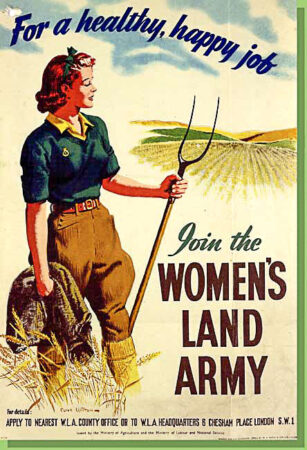
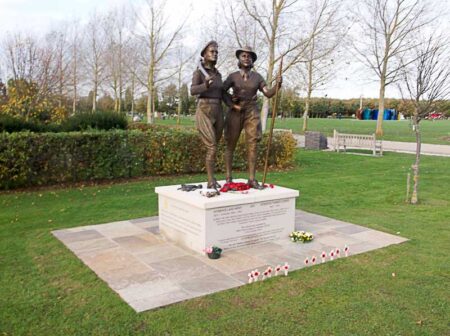
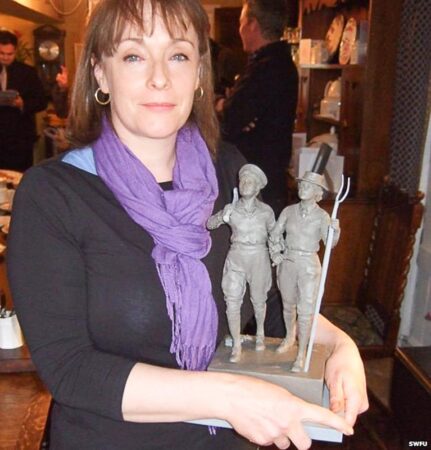
Our topic today is not about the Land Lassies but their counterparts who happened to work on canal boats in England to ensure vital war supplies such as coal, timber and agricultural products (and even munitions) reached their destinations. These women were nicknamed “Idle Women” after the Inland Waterways badge worn on their clothing. As you will see, they were hardly idle.
Did You Know?
Did you know that cruise lines have certain codes that you never want to hear announced over the ship’s loudspeakers? Keep in mind that each cruise line has its own set of codes but many of the codes are universally used.
Codes:
Alpha: Medical emergency
Bravo: Fire on board
Delta: Damage to the ship
Echo: Brace for collision
Kilo: Prepare lifeboats
Oscar: Man overboard
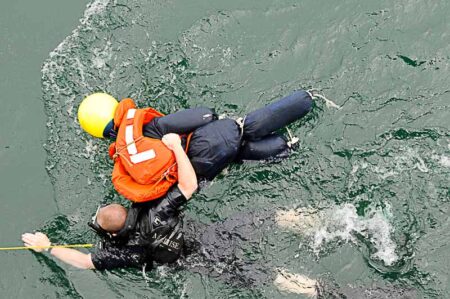
Papa: All staff on deck
Whisky: Mayday
Zulu: A fight between passengers has broken out
(This code is probably used a lot on Carnival cruises)
I guess in our next blog I will have to give you instruction on how to find the ship’s morgue and jail.
Bon Voyage!
Canals of the United Kingdom
Canals were first used in the southern part of England during Roman times. Their primary function was to provide irrigation but there were several navigable canals. The peak of the canals’ usefulness came during the Industrial Revolution between 1750 and 1900. (The debate goes on as to the actual beginning and end of the Industrial Revolution.) Horse-drawn narrowboats were eventually replaced by steam and then diesel powered boats. One of the significant innovations was the “Tom Pudding” compartment boat used to transport coal. Up to nineteen compartment boats were towed by a “Tom Pudding” tug. Toward the late 19th-century, wide-waterways were built to accommodate larger boats. In 1894, the 36-mile Manchester Ship Canal opened to ships with a length up to six hundred feet. By 1905, the last new canal was developed in South Yorkshire.

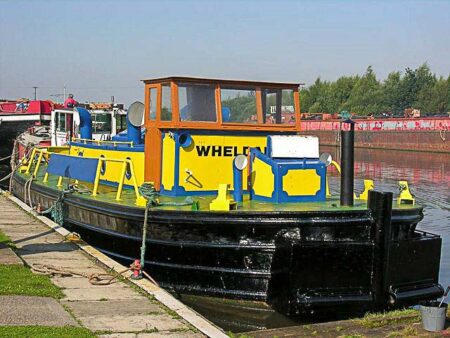
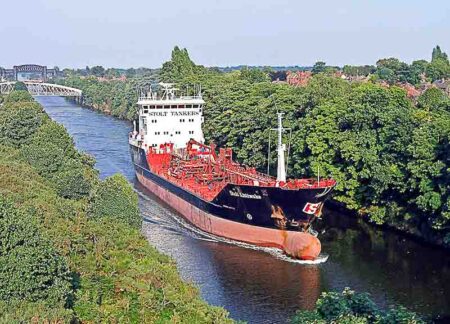
As more and more freight went by rail, the narrow canals and locks began to fall into disrepair. (The larger canals and locks continued to add value to the country’s transportation system and were kept in good working condition.) By the mid-1950s, the canals had become more of a historic relic and interest grew in using them for leisurely activities. Town and village politicians began to clean up “their” canals and promote them as tourist destinations. Today, many of the narrow canals have been restored to being navigable and like France, barges now ply 4,700 miles of waterways, locks, and even aqueducts.
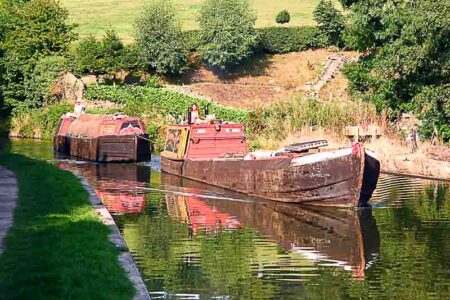
World War II
At the outbreak of war in September 1939 and throughout World War II, England was forced to import much of its food (its agricultural self-sustainability was about 30%) as well as other important goods and commodities. The Ministry of War Transport (“MWT”) eventually decided to use the canals to assist in the transportation of coal and food but there was one problem: most of the boatmen had joined the British armed forces. So, the call went out to women to sign up as a “boater.”
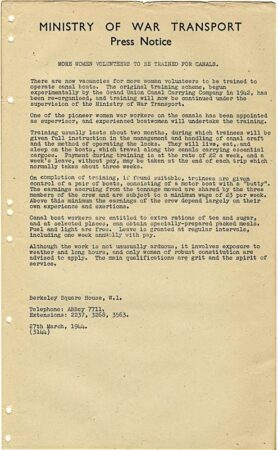
Inland Waterway Women
Daphne March and Molly Traill were two boatwomen working on March’s canal boat, Heather Bell, transporting cargo up and down the canals. Originally, the 1941 recruiting effort by the Grand Union Canal Carrying Company (“GUCCC”) attracted a handful of women but the GUCCC rejected the women on the premise they did not have any experience. (The real reason was the GUCCC did not think women could handle the job.) March and Traill approached MWT and convinced the government and GUCCC to hire these women based on March and Traill’s commitment to train the new recruits. In early 1942, the first recruiting posters were published, and the first group of trainees started in May 1942.
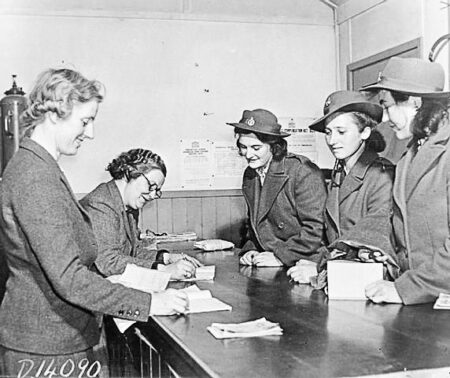
So, why were the women nicknamed, “Idle Women”? While they didn’t wear a unique identifying uniform, each woman wore a cheap, blue badge with the initials “IW” sewn on the badge. It stood for “Inland Waterways,” but seasoned boat people referred to them as “Idle Women” which the volunteers eventually took as a badge of honor. It was hard work, and the women quickly developed a well-deserved reputation for their commitment to the war effort.
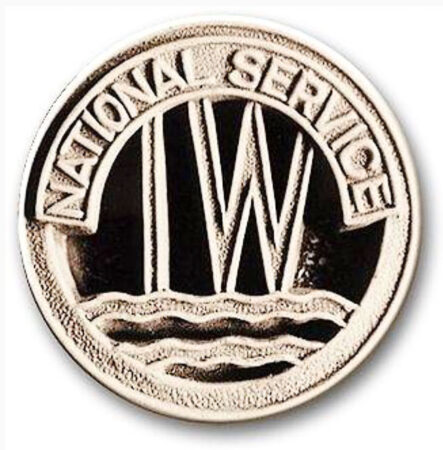
Click here to watch the video The Idle Women: Recreating the Journey.
Boatwoman’s Training Scheme
The Women’s Training Scheme, or “Boatwoman’s Training Scheme” (“Scheme”) was developed and about 48 women between the ages of 18 and 35 signed up initially. Most of the volunteers “graduated” but there were some who didn’t make it. (One quit after thinking the other “girls were too stuck up” and another was returned to a mental institution after having been mistakenly released.)
Eily “Kit” Gayford was brought in to train the women on how to handle the boats, operate the locks, learn the geography of the canals, and master the loading and unloading of cargo. The training took about six weeks and Gayford made sure the training was rigorous so the women realized the hard work that would be required of them.
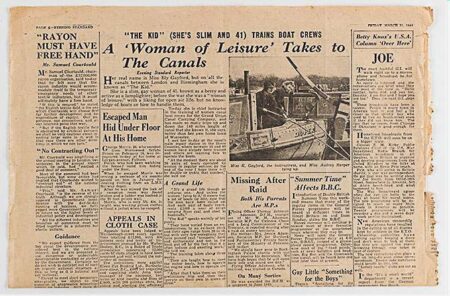
The boatwomen were paid about £2 per week during their training. Once qualified, the wages rose to £3 per week. Wages also included an amount based on the boat earnings and was split between the crew members.
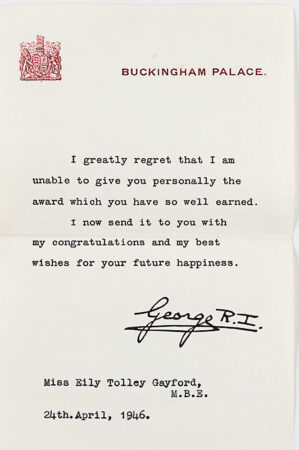
Click here to watch the video Historic footage of loaded narrow boats on the Jam ole run.
Life Aboard a Narrowboat
It was a hard life onboard a seventy foot narrowboat. The crew typically worked 18 to 20-hour days on boats that never docked except to load and unload. Each crew consisted of three women, and they were assigned a motor (diesel) boat and a “butty” (i.e., no engine). The motorboat towed the butty using a “snubber,” or rope. Each narrowboat carried one load, typically cement, grain, flour, steel, coal, and other food goods.
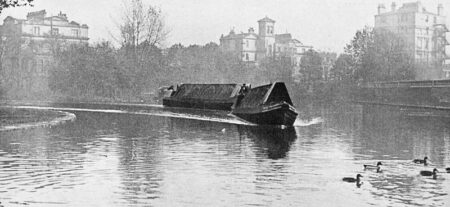
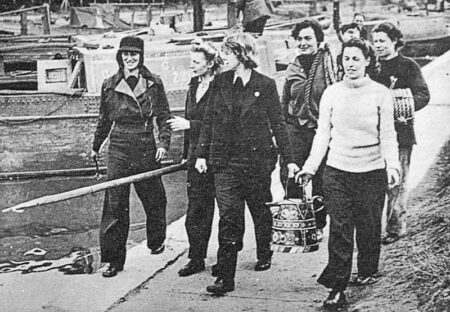
Two women shared a tiny and cramped cabin on the motorboat while the third used the butty cabin. Keeping clothes and bedding dry was next to impossible. The women were issued emergency ration cards and unlike the Land Girls, there were no extra rations. Obtaining daily food became difficult and required ingenuity on their part. There were no toilet facilities onboard other than the “bucket and chuck it” procedure.
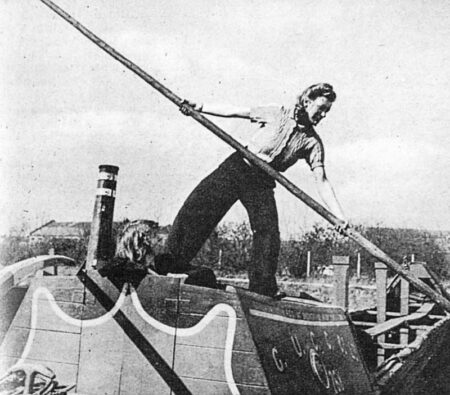
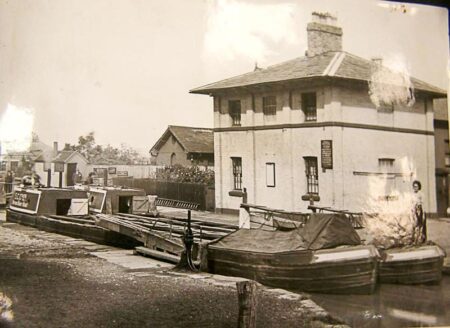
Click here to watch the video Idle Women and Judies, by Heather Wastie.
The End of the War
It is estimated that about forty-five women worked on the canal boats during the war. At any one time, between 15 and 30 boats were in operation.
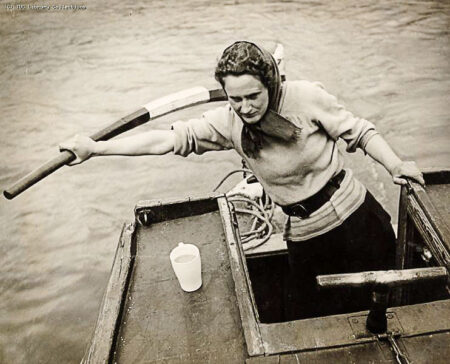
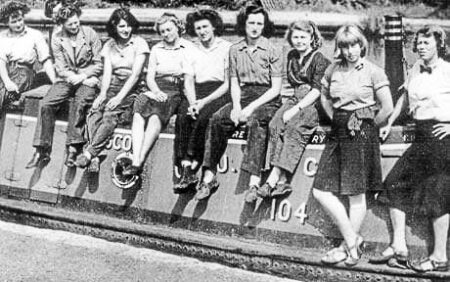
The MWT took over the administration of the Scheme in 1944 and during this time, they expanded the number of canals serviced by the narrowboats. However, after the war ended, there was no need to continue the large movement of supplies along the canals and the women found themselves out of work. What jobs remained were given to the men returning from active duty.
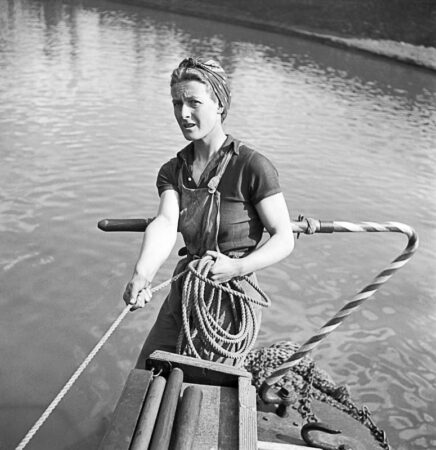
Despite embracing their nickname, “Idle Women,” these volunteers proved to everyone that they were hardly “idle” during their four years of contributing to the war effort. In the end, the naysayers at the GUCCC who rejected applications of women for the mere fact they weren’t men, changed their minds and acknowledged the women’s accomplishments.
The Canal Museum
The Canal Museum (formerly known as the “National Waterways Museum Stoke Bruerne”) is located next to the Grand Union Canal near the village of Stoke Bruerne in Northamptonshire, England. It is one of three museums operated by The Waterways Trust to preserve the history of British canals. A commemorative plaque honoring the women who worked on the canals during the war was placed in the museum.
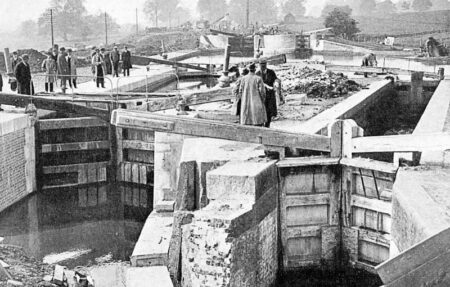
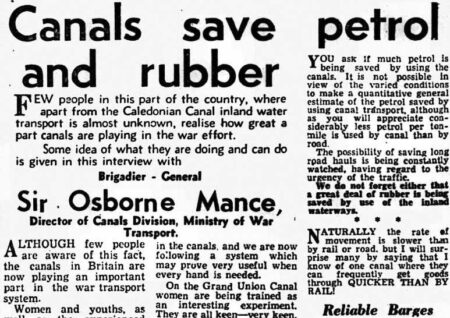
We are fortunate to have several books written by former “Idle Women.” The memoirs give an excellent insight to the recruitment, training, and work on the canal boats. They are listed in the recommended reading section below and identified with a double asterisk.
Next Blog: “Queen Bess”
Correspondence and Commentary Policy
We welcome everyone to contact us either directly or through the individual blogs. Sandy and I review every piece of correspondence before it is approved to be published on the blog site. Our policy is to accept and publish comments that do not project hate, political, religious stances, or an attempt to solicit business (yeah, believe it or not, we do get that kind of stuff). Like many bloggers, we receive quite a bit of what is considered “Spam.” Those e-mails are immediately rejected without discussion.
Our blogs are written to inform our readers about history. We want to ensure discussions are kept within the boundary of historical facts and context without personal bias or prejudice.
We average about one e-mail every two days from our readers. We appreciate all communication because in many cases, it has led to friendships around the world.
★ Read and Learn More About Today’s Topic ★
BBC News. Memorial Arboretum Land Girls monument unveiled after three-year fundraising campaign. 21 October 2014. Click here to read.
Canal River Trust. Click here to visit the web-site.
Cornish, Margaret. Troubled Waters: Memoirs of a Canal Boatwoman. London: Hale, 1987.**
Cotes, V. Cecil. Two Girls on a Barge. Sacramento: Legare Street Press, 2022 (Originally published in 1891 by Chatto & Windus.)
Gayford, Eily. The Amateur Boatwomen (Working Waterways). Exeter, UK: David and Charles Publishing, 1973.**
Huth, Angela. Land Girls. London: Constable, 1995.
Rattray, Veronica. My Land Girls Years: 1939−1948. UK: Athena Press, 2009.
Smith, Emma. Maidens’ Trip: A Wartime Adventure on the Grand Union Canal. London: Bloomsbury UK, 2010.**
Staveley-Wadham, Rose. Far From ‘Idle’: The Women Canal Workers of the Second World War. The British Newspaper Archive, 4 February 2021.** Click here to read.
Tyrer, Nicola. They Fought in the Fields: The Story of a Forgotten Victory. Stroud, U.K.: The History Press, 2008. (Originally published in 1996 by Sinclair-Stevenson.)
Vickers, Emma. The Forgotten Army of the Woods: The Women’s Timber Corps during the Second World War. Agricultural History Review, 59 (1) Pages 101-112, 2011. Click here to read.
Woolfitt, Susan. Idle Women. Kidderminster, U.K.: M. & M. Baldwin (Publishers), 1984.**
** The author was a former boatwoman during the war.
Disclaimer:
There may be a chance that after we publish this particular blog, the video links associated with the blog are no longer accessible. We have no control over this. Many times, whoever posts the video has done so without the consent of the video’s owner. In some cases, it is likely that the content is deemed unsuitable by YouTube. We apologize if you have tried to access the link and you don’t get the expected results. Same goes for internet links.
What’s New With Sandy and Stew?
Sandy and I recently had the pleasure of hosting several of our grandchildren from Iowa for ten days. Pool time was maxed out as was eating out for lunches. The next set of kids arrive in mid-July. Finley qualified for a major junior golf tournament in Miami at the Doral. Since he lives in Montana and doesn’t experience extreme heat and humidity, his father thought it might make sense for them to stop and see us so Finn can play some practice rounds before the tournament begins. I thought that was a good idea. Several weeks ago, Finley placed second in the Montana State Golf Association tournament. Not bad for an eleven-year-old playing against high school students.
Thank you to all of you who subscribe to our bi-weekly blogs. It seems there isn’t a day that goes by where we don’t increase our readership. Please let your history buff friends and family members know about our blog site and blogs.
Someone Is Commenting On Our Blogs
Thanks to Marco Popov for contacting us regarding our recent (i.e., reprint) blog, The Double Cross System (click here to read the blog). Marco’s father, Duško Popov, is one of the double agents highlighted in the blog. Marco had some interesting information on his father including the real origin of Duško’s codename, “Tricycle.” We amended the blogs (the original and the recent reprint) to reflect some changes as well as new information. We love hearing from people who knew the men and women from our blogs. Thanks Marco and I hope we can stay in touch.
Thank you, Bernie L., for reaching out to us regarding the blog, The Ritchie Boys (click here to read the blog). Bernie’s father was a German refugee who served in the U.S. Army and trained in military intelligence at Camp Ritchie. Bernie serves as the president of the Friends of Camp Ritchie, a non-profit dedicated to preserving the memory and lessons learned from Camp Ritchie. He posted our blog on the organization’s Facebook (“RITCHIE BOYS OF WWII”) so I thank him for that. The blog site for the museum is here.
Beth L. sent us an email concerning the blog, Camp King (click here to read the blog). Beth’s father was a captain while serving at Camp King. Over the past twelve years, this blog has generated the highest number of emails and like Beth, everyone is either a son or daughter of the men who were assigned to this base. She has some interesting stories, including meeting Gen. Eisenhower, that we will share with you in a future blog.
If there is a topic you’d like to see a blog written about, please don’t hesitate to contact me. I love hearing from you so keep those comments coming.
Share This:
Follow Stew:
Find Stew’s books on Amazon and Apple Books.
Please contact Stew directly for purchase of books, Kindle available on Amazon. Stew.ross@Yooperpublications.com or Contact Stew on the Home Page.
Shepherd.com is like wandering the aisles of your favorite bookstore.
Do you enjoy reading? Do you have a hard time finding the right book in the genre you enjoy? Well, Ben at Shepherd.com has come up with an amazing way to find that book.
Shepherd highlights an author (like me) and one of their books. The author is required to review five books in the same genre. So, if a reader is interested say in cooking, they can drill down and find specific books about cooking that have been reviewed by authors in that category. Very simple.
If you like to read, I highly recommend you visit Shepherd.com. If you do, please let me know what you think and I will forward Ben any suggestions or comments you might have.
Click here to visit Shepherd’s website.
Click the books to visit Stew’s bookshelf on WWII.
Check out Stew’s bookshelf on the French Revolution.
Please note that we do not and will not take compensation from individuals or companies mentioned or promoted in the blogs.
 Walks Through History
Walks Through History
Copyright © 2024 Stew Ross









Always informative. Great job and thanks.